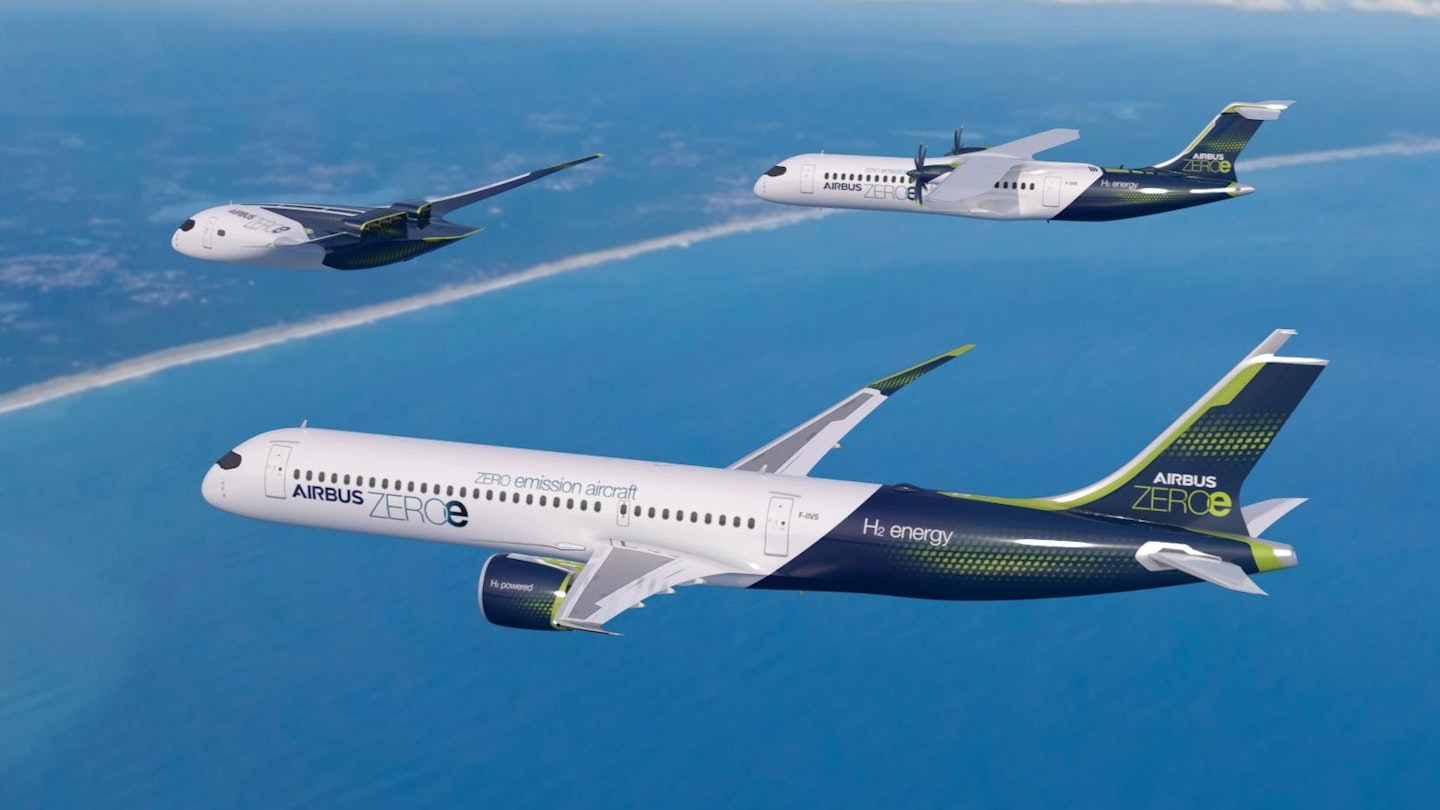Airbus Reveals Zero-Emission Aircraft Concepts
Sustainable travel is high on everyone’s agenda, so the news that Airbus has revealed three concepts for the world’s first zero-emission commercial aircraft is a very positive one.
Overview of Zero-Emission Concepts
The concepts each represent a different approach to achieving zero-emission flights, and they could enter service by 2035. They explore various technology pathways and aerodynamic configurations, but all rely on hydrogen as a primary power source. Airbus believes it holds exceptional promise as a clean aviation fuel and feels it is likely to be a solution for aerospace and many other industries to meet their climate-neutral targets.
Turbofan Design

The concepts include a turbofan design that can hold between 120 and 200 passengers, with a range of over 2000 nautical miles. It is capable of operating transcontinentally and is powered by a modified gas-turbine engine running on hydrogen through combustion. The liquid hydrogen will be stored and distributed via tanks located behind the rear pressure bulkhead.
Turboprop Design

The second concept is a turboprop design, designed to hold up to 100 passengers using a turboprop engine. Also powered by hydrogen combustion in modified gas-turbine engines, it would be capable of traveling more than 1000 nautical miles, making it a perfect option for short-haul trips.
Blended Wing Body Concept

The third concept is a “blended-wing body” design concept in which the wings merge with the main body of the aircraft, boasting a range similar to that of the turbofan concept. The exceptionally wide fuselage allows for multiple possibilities regarding hydrogen storage, distribution, and cabin layout. It can hold up to 200 passengers.
Infrastructure Needs for Hydrogen Aviation
According to Airbus, airports will require significant hydrogen transport and refueling infrastructure to meet the needs of day-to-day operations of these concept planes. “The transition to hydrogen as the primary power source for these concept planes will require decisive action from the entire aviation ecosystem,” says CEO Guillaume Faury. “Together with the support from government and industrial partners, we can rise to this challenge to scale up renewable energy and hydrogen for the sustainable future of the aviation industry.”




